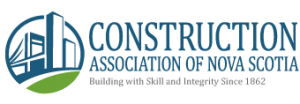Trudeau Announces Infrastructure Investment
The Liberals’ plan includes $125 billion in infrastructure investment over 10 years. Read more
The Liberals’ plan includes $125 billion in infrastructure investment over 10 years. Read more
After a large increase the previous month, Nova Scotia building permits, seasonally adjusted, decreased 33.1 per cent compared to June 2015 to $101.5 million. Permits values for the month were 6.2 per cent higher compared to July 2014. Permits for residential construction were down from the previous month 39.6 per but the six month average continues to trend up. Non-residential permits fell 7.0 per cent compared to June 2015 but were 7.1 per cent higher than July 2014. Read more
Residential construction (unadjusted for seasonality) in Nova Scotia for the second quarter 2015 was $542.9 million, 6.3 per cent higher than the 2nd quarter in 2014. New dwellings construction increased by 22.0 per cent (+$27.3 million) due to an increase in apartments (+$31.3 million, +107.6%) while singles were up 0.8 per cent (+$0.6 million). Renovations, the largest share of construction investment , was up 2.3 per cent or $7.8 million compared to 2nd quarter of last year. Read more
Key stakeholders in the Industrial-Commercial-Institutional (ICI) construction industry gathered today for the official release of the Nova Scotia 2015 Labour Market Assessment (LMA) Report. Read the Report
Statistics Canada is reporting that GDP fell in the second quarter, confirming fears that the economy was in recession for the first half of 2015. StatsCan says the economy contracted at an annual pace of 0.5% in the second quarter of the year which is slightly less than analyst estimates and also lower than the 0.8% decline in Q1. Read more
Christoph Mertz, a researcher at Carnegie Mellon University in Pittsburgh, has mounted a small camera on his windshield. Combined with the computer program he’s built, he shoots video of the pavement unspooling in front of him as he drives. Read more
The Government of Quebec has launched a guide to build wood buildings up to 12 storeys. The guide, titled Construction of Mass Timber Buildings Up to 12 Storeys, outlines the technical principles required to design and construct wooden buildings up to 12 storeys using mass timber. Read more
Showcase your potential! September 4th is the application deadline for the Oct. 16 exam. Learn more
While most knows BIM stands for “Building Information Modelling,” it’s become abundantly clear that BIM means many things to many people. Read more
While the time of the Baby Boomers in the construction industry is coming to a close, there is still a severe shortage which is not being filled quickly enough by the Millennial generation. Read more
